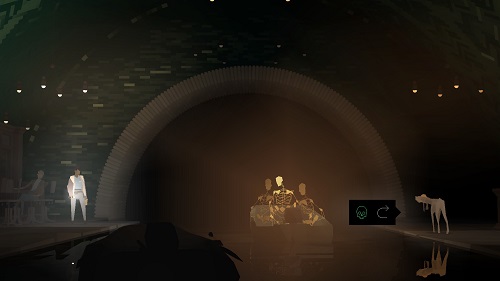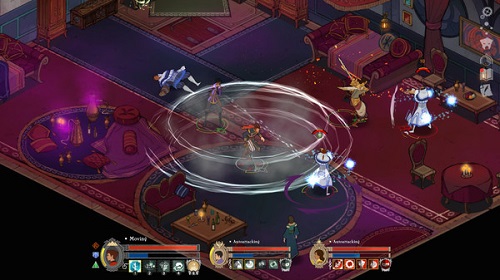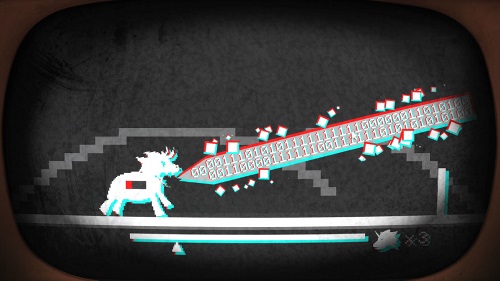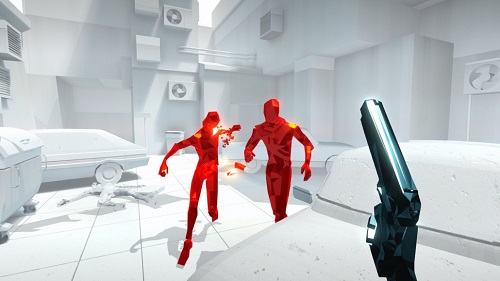I struggled a bit with my game of the year list, mainly because I was trying to squeeze more games than would fit. 15 games into 10 slots at final count. I debated whether I should increase the list to 15 to accommodate all the games I wanted to mention. I also did think about forgoing the top 10 format entirely. With an alphabetical list I could put as many as I wanted onto the list without getting wonky with the numbering system. I also had thought about doing what Kyle Kallgren has done for the past two years or so and ordering them by whatever order the transitions take me in.
Ultimately, I decided not to get fancy with it. The list was late enough and it was long enough that anything else wasn’t worth the effort. This time around anyway. However, I also don’t feel I’m ready to give up on the top ten list either. Mainly because if I do, then I don’t get to declare a game of the year since they’re ordered not by my personal preference. It’s such strange and nonsensical thing to be held back by, but there I am. Maybe some year in the future.
Regardless, I have a couple of more games that were originally on my top 10 list, until I played better games that eventually pushed them off for one reason or another. But I still want to mention them and this is compromise I came up with.
I’m not going to get too detailed this time around. Just some thoughts on their good points and why they didn’t make it in the end. So, in alphabetical order:

Kentucky Route 0 Act IV
I love Kentucky Route 0 as a whole, but it’s getting to the point, where I’m really ready for it to just be completed already. The first episode was released in January of 2013. The second episode came out later the same year. I’ve joked about how given the exponential progression of episode releases; Act V should be released by 2020. I’m not sure I’ll care by then.
Act IV is just as weird and different from any other games I’ve played as the first three Acts. We’ve moved on from the real world and the surreal Route 0 to the new locals on an underground river. We’re traveling by barge, island hopping this time, like contemporary version of Huckleberry Finn. The narrative of the group seems to take a back seat as we engage with a bunch of short stories featuring the strange locales on the river.
Tonally it feels like more of the same, but as part of the whole, it feels more like connective tissue than anything groundbreaking in the story. We may move the cast to the fabled Dogwood Drive and Conway gets taken by the Hard Times company, but the rest is more fantastical flavoring for the game’s themes. As a result, it feels a bit lesser, but that’s still a welcome addition to the game overall.
It suffers from being act four. It’s not unique to the game. In five act structures, act one introduces everything, act two builds it up, act three is the climax and act five is the conclusion and wrap-up. They all having something going for them. Act four is the downward slope of the narrative arc. It pushes some plot points forward but doesn’t have anything of its own to stand out in comparison. KR0 Act IV is no different.

Masquerada: Songs and Shadows
Of all the game that eventually showed up on my lists, I played the three isometric RPGs last. They are Masquerada: Songs and Shadows, Tyranny and The Banner Saga 2. I thought I knew what I’d expect from the latter two, so as I was playing Masquerada I thought I could cheese my list and clump them all together under a single entry, getting 12 games in my top 10. They were essentially the same game, right? Then I actually played Tyranny and The Banner Saga 2 and both blew me away, leaving Masquerada in the dust.
All three games take a more political, serious tone with the fantasy genre and I thought the games could be comparable, but really Masquerada is a lot more conventional that it first appears. It’s set in a grand Venetian style fantasy city-state with webs of intrigue between various power brokers and this could lead to a different sort of narrative. However, it ultimately feels like a grittier version of the heroic fantasy tale with some neat twists along the way. Likewise, it sticks to the Bioware formula of game structure. Going from mission, then to homebase to talk to party members, then a new mission, rinse and repeat.
While there are a lot of moving parts, its story isn’t as complex as the other two, nor as deep, but I keep coming back to it for a number of reasons. First, its theming is a fresh coat of paint on traditional tropes. Second, I legitimately like the cast of characters. Third, the combat is a fun romp of real time tactical with pause. And finally, I think it’s deserving of real critical examination with what it has to say about political revolution. I’m not sure how I feel about its conclusions, but it is worth the effort to find out.

Pony Island
Pony Island is essentially an entire game full of perception warping postmodernism. A large amount of the fun is discovering of all switch ups and surprising changes that happen over the game’s short play time. Skip to the next entry on this list if you haven’t yet played Pony Island. Seriously, I’m about to list a bunch of things the game does and they’re best experienced first-hand.
There’s a lot of concepts crammed into Pony Island. You’re playing a really bad casual running game that turns into a commentary on free-to-play wallet gouging games. You also play a hacking game to alter the gameplay of the causal running game in order to proceed. Then the running game turns into Super Mario World with hidden paths. Once the game breaks and you have to go into the options menu to press a button called “fix game.” There’s a boss that, instead of attacking you, asks you three questions and tries to trick you into answering wrong in unique ways each time. Then you find out the whole arcade is a level of hell and the game is your punishment created by the devil himself.
Finally, there’s the hidden extra that captivated my interest for weeks. There is a demon in the game, hidden away that should you find, him will allow you to ask a question from a list of five. Who was I? When did I die? Who killed me? Where did I die? How did I get here? It adds background lore that I was certain added more depth to the game that its simple critique of casual game business practices, but then I thought I don’t know enough about Christian theology to properly parse it. Now I don’t know if I read too much into it in the first place.

Superhot
Speaking of games with postmodern deconstructionist gameplay and an inscrutable story weaved behind hard-to-find secrets, Superhot. A lot has been said about Superhot‘s unique take on the shooter, so I don’t need to go into it here. I’ll just say that ‘it is the most innovative shooter I’ve played in years’ and leave it at that. It’s worth highlighting for doing something different with the video game form alone. However, the story makes me hesitate.
Superhot reached further and wasn’t as successful, but not for the reasons many others complain. Many other critics wished Superhot didn’t have as story at all. I’m the exact opposite, I don’t think there was enough of the story available to the average player. I wish there were more details even if they were abstract and theme related instead of plot related.
Superhot is about a person online trying to play a pirated copy of a game called Superhot that hasn’t been released yet. As it goes on Superhot is shown to be far more insidious. It’s part mind control, part transhumanism experiment and I don’t know what else. It climaxes with a Superhot level where you enter your own apartment where you see yourself wearing a VR headset to shoot yourself in the head. All so your in-game persona is free to play more Superhot.
There are hidden terminals in each level. If you can figure out how to jump out of the geometry of the level to find their hiding spots, you’ll fine in each one is a single question and answer all adding further details towards the game’s themes by making a lot thought provoking questions explicit instead of something you’d have to think of yourself out of the blue. This is something I didn’t know about until I was researching them game online for a podcast.

Titanfall 2
Titanfall 2 is a complete blast to play. Let’s just get that out of the way first. Surprisingly enough, a game about rocket boosting, wall running, military exosuits and dueling war mechs is filled with spectacle. Spectacle gets a bad rap, often because it takes the place of substance in a work. However, spectacle also often gets narrowly categorized as big explosions and the like. The best way to think about it is the oft used metaphor of fireworks. Titanfall 2 at least escapes the latter pitfall.
Its spectacle is not just big and bombastic, but creative and inventive. We fight through a factory as it builds houses around us on a massive assembly line. We have to navigate a science facility by rhythmically switching between two time periods to complete platforming challenges. The game’s climax is a racing whirlwind of destruction that exists on the corona of a manmade miniature black hole. Spectacle may be the name of the game here, but it’s superbly crafted spectacle that has something new and inventive in almost every level.
At the end of the time travel level, you see the explosion that caused the facility’s destruction. At that instant you freeze time. While walking between the debris towards the device that caused it, I felt struck. You can’t interact with anything; they’re frozen in time. This isn’t something that is difficult to pull off for a video game. Everything — people, chunks of asphalt, vehicles — are just objects placed in space. But conceptually, this was something striking and new. It pulled me out of complacency with shooting combat and made me marvel at what the game was showing me.
But yeah, the story is a bit shallow and nowhere near as deep as the well of creativity it took to make all the superb moments in the game.
***
Ok, I’m done for real this time. Moving on to new stuff now.

